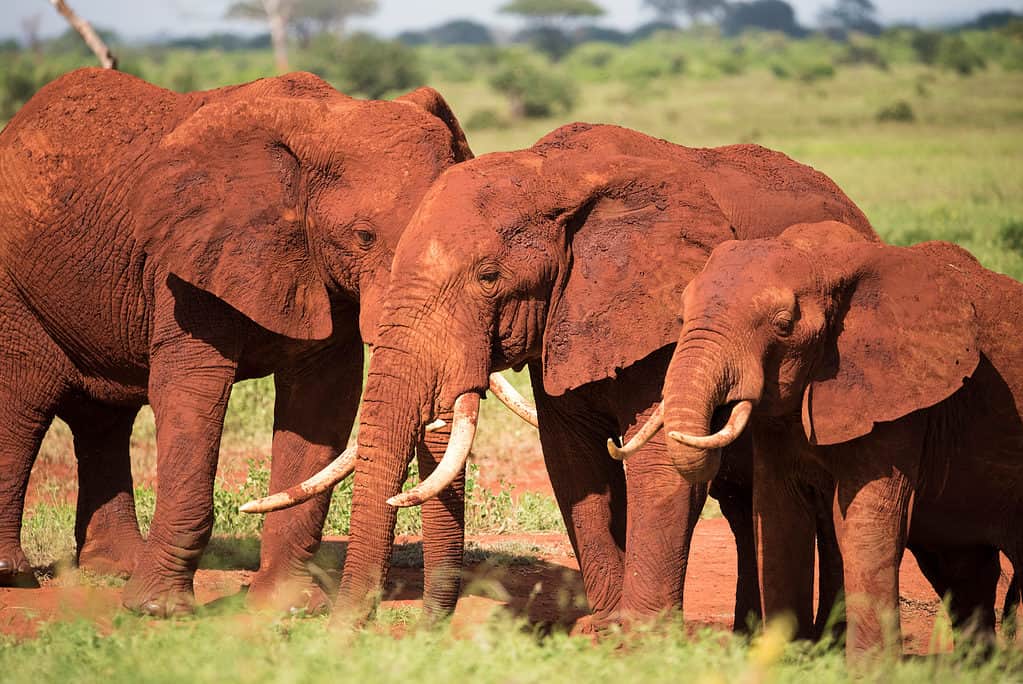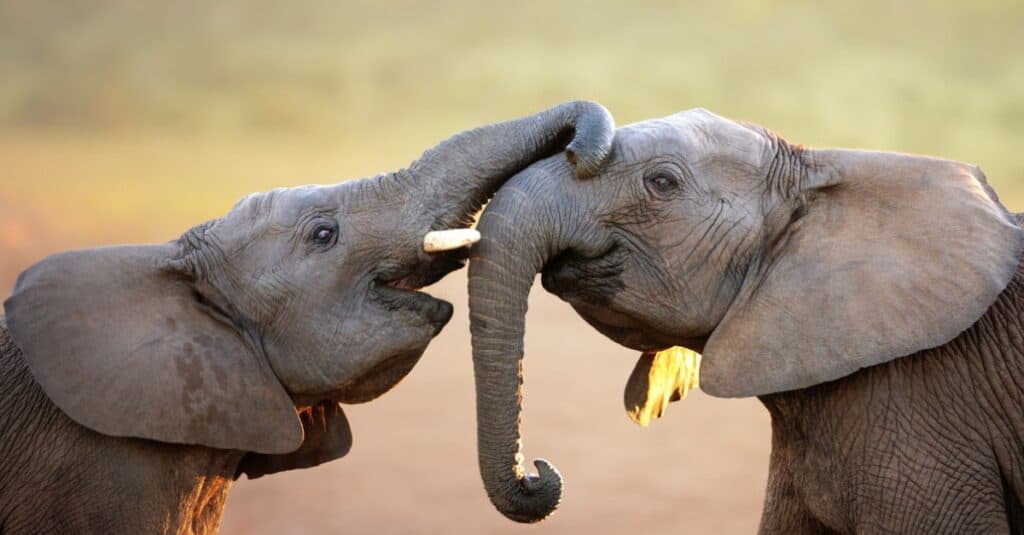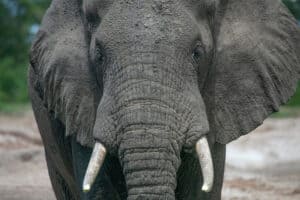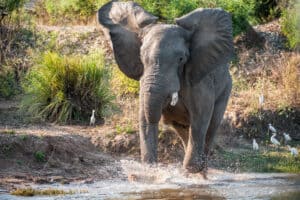Moments of unrestrained, unadulterated joy carry power. Even the most hopeless situations can be made hopeful through playfulness. Nature is always prepared to remind us of how to invoke it, even though it does not always come naturally to people. Feeling a moment of joy during trying times is easier than you might imagine.
A Baby Red Elephant Gets Cheeky
A young elephant renders it difficult for Alvin Kaunda, a news journalist in Kenya, to maintain his composure while he makes a crucial point about how human activity has damaged the environment for the red elephant species found in the country.
Witness the Heart-Warming Moment Below!
The arid Tsavo soil is naturally a reddish hue, and the elephants frequently take dust showers. The elephant‘s skin is protected by dust, which plays a crucial anesthetic role. Additionally, it makes their tusks appear practically silver, which is an added perk.
Every chance they have, the elephants bathe in the park’s rivers and water holes. They appear in a fresh, somewhat rubicund form. They essentially have a different color as they dry because of the mud that has been applied to their skin.
One rebellious trunk can be seen persistently probing and nudging Kaunda’s head and ear while he tries to maintain attention on the destroyed ecosystems and an interruption in the cycle of life. The reporter, to his credit, maintains his composure until the trunk finally plops directly on top of his head. Then, he started laughing loudly without control.

A herd of African red elephants in Tsavo National Park Kenya
Africa
©Prasanth Aravindakshan/Shutterstock.com
Making Light of Things
Of course, it’s important to understand how important his report is. The worst drought Kenya has seen in more than 40 years has killed over a thousand animals, including hundreds of elephants. We need to understand how our activities are affecting the people with whom we share the world, as well as what we can do to help.
But the infant elephant’s carefree enjoyment serves as a poignant reminder of the need for awareness and change. Both creatures and humans are interconnected. One’s suffering affects us all. When someone is ecstatically joyful, we can all check in and experience that joy. Because of how precious that connection is, we must actively participate in it.

A drought is a period of drier-than-normal conditions that results in water-related problems.
©Piyaset/Shutterstock.com
News anchors and reporters are trained to keep their composure, especially when talking about serious topics. Alvin Kaunda shows us that these gentle giants just want to live life and have fun while doing it.
The message he’s attempting to share shows how special elephants truly are to Kenya’s ecosystem. Perhaps the young elephant is thanking Kaunda for being a voice for the animals! It’s hard not to smile from ear to ear while watching these two interact!
Is It Normal For Wild Baby Elephants to Touch Humans?

Baby elephants love to use their trunks to touch and explore.
©iStock.com/johan63
The Kenyan reporter was speaking at a baby elephant orphanage in Kenya. That puts a definite spin on the behavior of the elephants surrounding him. Given that they surely have regular human interaction, these elephants appear tame and calm. Wild elephants, on the other hand, are cautious and can become aggressive if approached by humans. It is never advised to approach a group of wild elephants.
However, baby elephants are curious and playful by nature. They are also social, intelligent creatures, like their adult counterparts. It’s quite normal for a baby elephant to use its trunk to touch and explore unfamiliar objects, or in this case, humans. Given their youth, they don’t yet possess the caution (or manners) of adult elephants, and so this scene is not surprising.
But even baby elephants are powerful and unpredictable. Some may express curiosity, but others could definitely be shy or cautious. It’s always best to be aware of that and not get too comfortable in the presence of elephants, no matter how tame you may think they are.
How Large are African Elephants?

Elephant calves average 200 lbs weight at birth but grow quickly.
©iStock.com/WillieErasmus
Two types of African elephants are African bush elephants and African forest elephants. The former is the larger of the two, averaging a height of 10 feet, a length of 18 to 24 feet long, and weighing from 4 to 8 tons. The largest elephant on record was 13 feet tall and weighed 12 tons.
In comparison, baby elephants weigh from 150 lbs to 360 lbs at birth, depending on the subspecies, with an average of 200 pounds at birth. These critters grow quickly. For example, a baby elephant born in a zoo in Tuscon gained an average of 85 lbs a month, coming to weigh 900 lbs within just 9 months.
The photo featured at the top of this post is © paula french/Shutterstock.com
Thank you for reading! Have some feedback for us? Contact the AZ Animals editorial team.







